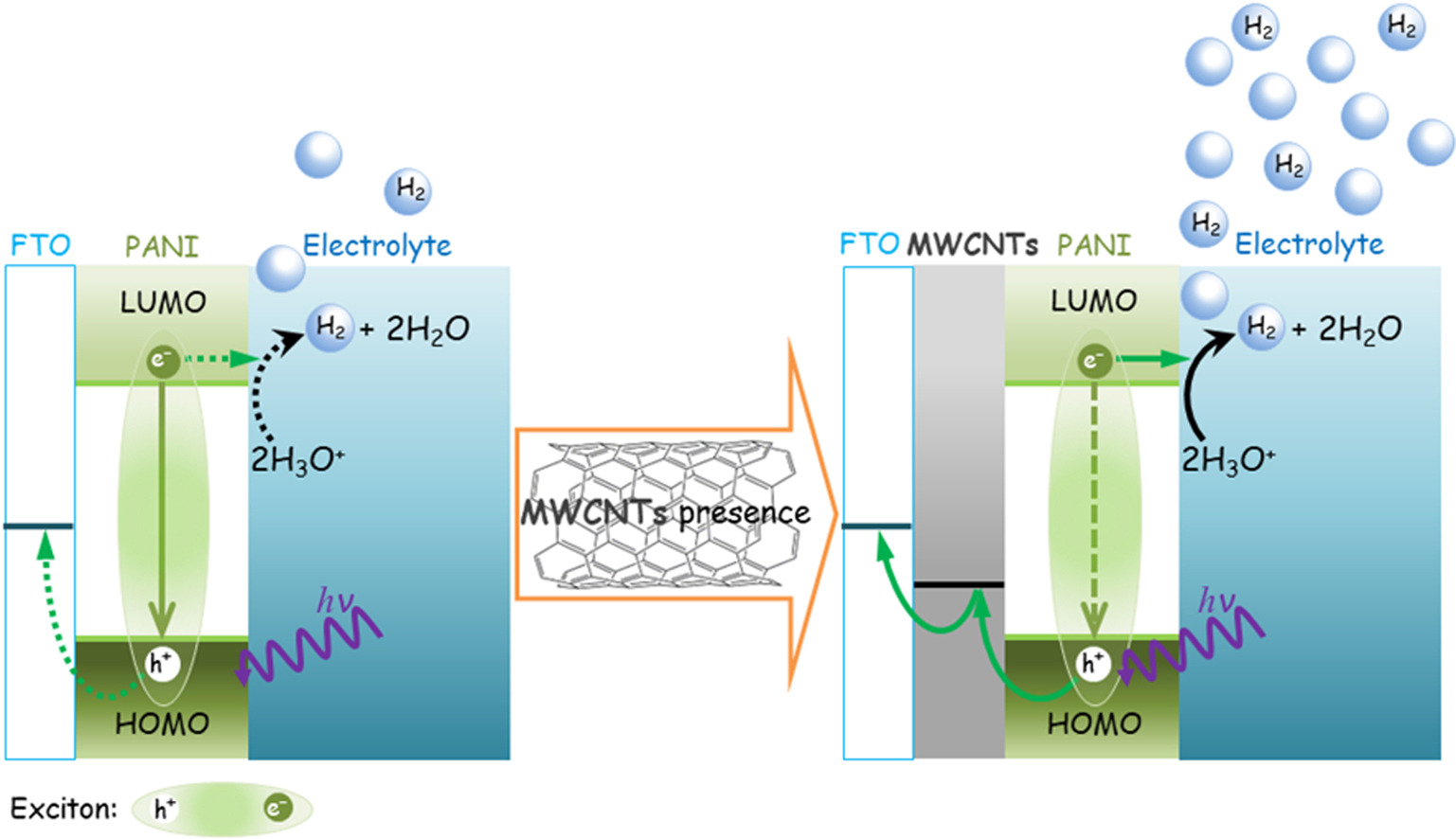

An article on the study describes the preparation of films comprising polyaniline nanostructures with an underlayer of multi-walled carbon nanotubes and assesses their performance in photoelectrocatalysis, especially to obtain hydrogen (image: Polymer)
A study supported by FAPESP produced films comprising polyaniline nanostructures with a carbon nanotube underlayer.
A study supported by FAPESP produced films comprising polyaniline nanostructures with a carbon nanotube underlayer.

An article on the study describes the preparation of films comprising polyaniline nanostructures with an underlayer of multi-walled carbon nanotubes and assesses their performance in photoelectrocatalysis, especially to obtain hydrogen (image: Polymer)
Agência FAPESP* – An article published in the journal Polymer describes the production of a material with the potential to be used to obtain hydrogen (H2) by solar-driven water splitting (photoelectrocatalysis) instead of the conventional electricity-driven process.
Also known as green hydrogen, H2 produced from renewable sources is a strong candidate for the accolade “fuel of the future”.
The article describes the preparation of films comprising polyaniline nanostructures with an underlayer of multi-walled carbon nanotubes and their promising photoelectrocatalysis performance, especially in H2 production, which requires good light absorption and enhanced stability, among other characteristics.
Polyaniline is an organic semiconductor belonging to the flexible polymer family. Although it was discovered over 150 years ago, it has only recently caught the attention of the scientific community owing to its high electrical conductivity.
The research involved groups at the Center for Development of Functional Materials (CDMF), a Research, Innovation and Dissemination Center (RIDC) established by FAPESP and hosted by the Federal University of São Carlos (UFSCar); and the Center for Innovation in New Energies (CINE), an Engineering Research Center (ERC) supported by FAPESP and Shell.
The article “In situ polymerized polyaniline films over multi-walled carbon nanotube coatings for enhanced photoelectrochemical performance” is at: www.sciencedirect.com/science/article/abs/pii/S0032386124002040.
* With information from CDMF.
Republish
The Agency FAPESP licenses news via Creative Commons (CC-BY-NC-ND) so that they can be republished free of charge and in a simple way by other digital or printed vehicles. Agência FAPESP must be credited as the source of the content being republished and the name of the reporter (if any) must be attributed. Using the HMTL button below allows compliance with these rules, detailed in Digital Republishing Policy FAPESP.





